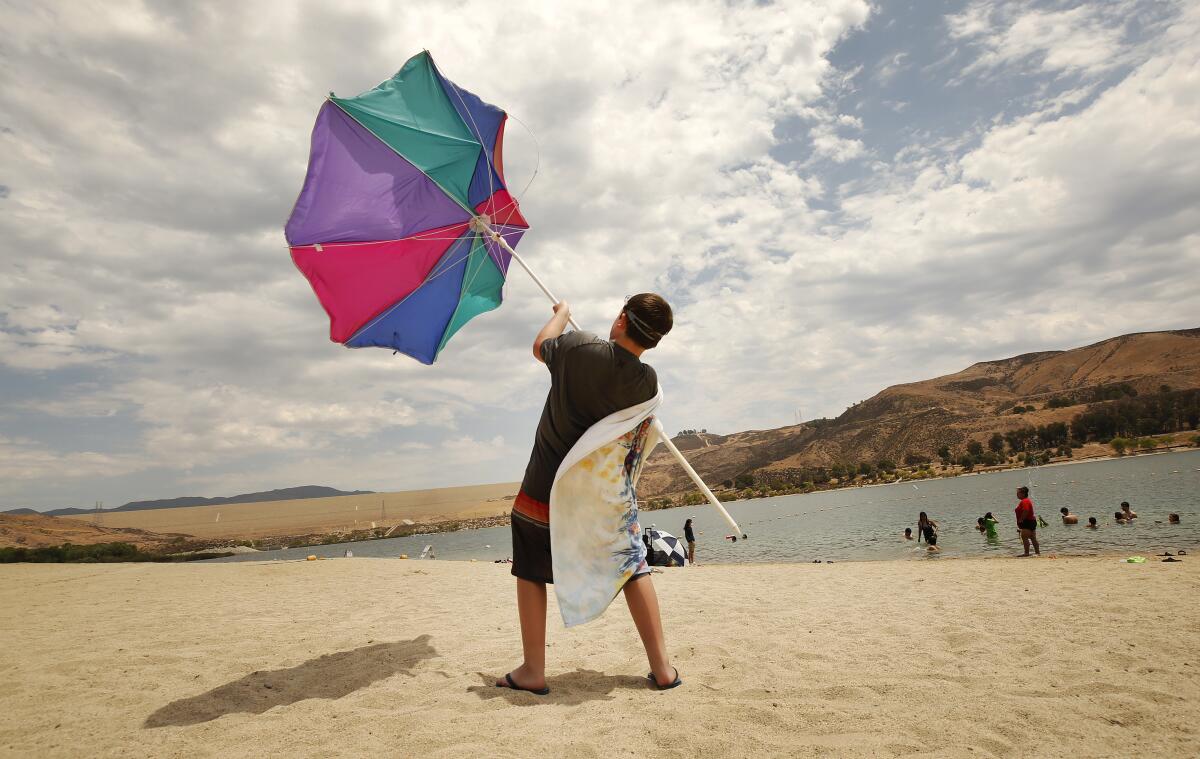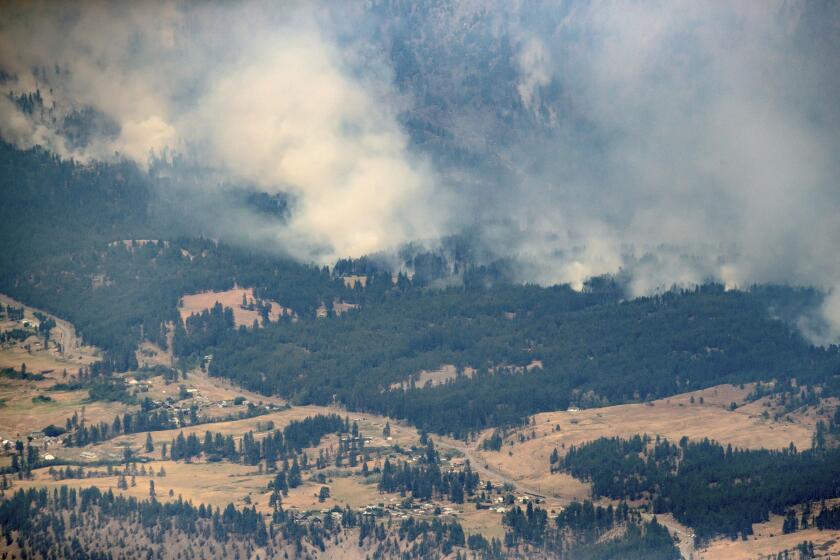‘Heat waves are killers,’ and a scorching one is likely to hit California this weekend

Potentially record-breaking temperatures are on their way to wide swaths of Southern California — a scorcher scientists say is clearly tied to climate change and could be lethal for those unprepared.
“Heat waves are killers,” said retired oceanographer and climatologist William Patzert, noting that more and more people in the Southwest and elsewhere are exposed to dangerous temperatures, even inside their homes.
A heat warning is in effect for the Santa Clarita Valley, Antelope Valley, and parts of the Los Angeles County mountains, set to expire over Sunday and Monday.
The National Weather Service expects “dangerously hot conditions,” with temperatures up to 113 degrees in the Antelope Valley — potentially record-breaking heat for this time of year, according to meteorologist David Sweet.
If the Antelope Valley reaches 113 degrees this weekend, it will be far from the first heat record broken in Southern California this summer.
“All three of our desert climate sites (Palm Springs, Thermal and Anza-Borrego) experienced their hottest June on record, with mean monthly temperatures of 93.5 F, 91.0 F, and 91.7 F respectively,” the National Weather Service’s office in San Diego tweeted Tuesday.
Temperatures of 120 to 128 are expected over the weekend in Death Valley, with daily record high temperatures “likely to be rivaled or broken,” according to the weather service.
With highs expected near 112 degrees, “we could be looking at some daily records in Fresno, especially on Sunday and Monday,” said meteorologist Colin McKellar at the National Weather Service’s Hanford office. In addition, Bakersfield, Merced and other areas of the Central Valley may break daily heat records over the weekend into Monday, McKellar said.
The Indian Wells Valley may experience its hottest day on record, McKellar said, with a high near 118 degrees possible on Saturday.
The Palm Springs area is also expecting a potentially record-breaking heat wave this weekend, with temperatures up to 121 expected across the Coachella Valley, according to the National Weather Service. This weekend, “it’s going to be pretty close, probably within a few degrees of some daily records,” said meteorologist Bruno Rodriguez with the National Weather Service’s San Diego office.
The hot weekend comes after a “mega heat dome” struck the Pacific Northwest and western Canada earlier this month, killing hundreds, igniting fires and prompting a study that quickly tied it to climate change.
This incoming heat wave can also be attributed to a warming planet, said Patzert.
“Over the past 60 years, every decade has been hotter than the previous decade. None of this should be a surprise,” he said. “We’ve had what I would call a tipping point or a crisis here with regard to heat waves.”
Heat poses a serious risk to human health, Patzert explained, especially when it surpasses 95 degrees. “That’s when the human body starts to have negative reactions,” he said. With climate change, “we’re spending more and more time over that [95 degree] threshold at various locations, especially in the West.”
The extreme temperatures will be particularly dangerous “for those working or participating in outdoor activities,” the heat alert for the Antelope Valley explains. The National Weather Service predicts overnight temperatures will remain “very warm” in the Antelope Valley, hovering in the mid-70s to mid-80s.
Residents in high heat areas should drink fluids, avoid spending time in the sun and check on family members and neighbors periodically. People and pets should not be left in vehicles, the National Weather Service warns.
Free, air-conditioned cooling centers are available across L.A. County. Additional tips for extreme heat can be found here.
Heat-related illness can be serious and life-threatening. Anyone suffering from signs of heat stroke should call 911. Here are additional tips for recognizing and handling heat-related illness.
With the heat and dry conditions also come an elevated fire risk, said Sweet. The National Weather Service urges residents to use caution with any potential flame sources, as fires continue to blaze across the state.
A heat wave in the Pacific Northwest and western Canada was virtually impossible without human-caused climate change, a study says.
Climate change, heat waves and unhealthy forests are combining to compound the threat of blazes, Patzert said. “The great forests, the Sierra and the Rockies becoming more and more desiccated and more prone to these extreme fire situations.”
In addition to the Antelope Valley, heat warnings are in effect for many other areas in California, such as the Cuyama Valley, parts of San Luis Obispo County, and large swaths of San Bernardino and Riverside counties.
Heat waves shine a glaring light on both local and global inequities. In low-income neighborhoods, with fewer trees and less access to air conditioning, “the heat wave is more punishing,” Patzert said. “As CO2 levels in the atmosphere continue to rise, the misery level across the planet will certainly follow.”
“If we don’t do some serious environmental mediation, which means weaning ourselves off fossil fuel, and considerable adaptation, which means making air conditioning more available for more people, the heat waves of 2021 will seem mild in 2031,” Patzert said. “We’ll be referring to 2021 as the good old days.”
More to Read
Sign up for Essential California
The most important California stories and recommendations in your inbox every morning.
You may occasionally receive promotional content from the Los Angeles Times.












